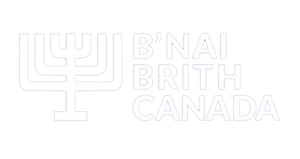Have you been the victim of harassment or discrimination in the workplace? Wondering what you can do?
What is discrimination?
Under Canadian human rights law, discrimination in the workplace consists of treating a person or group of persons negatively or differently, based on a prohibited ground of discrimination. Discrimination may be direct or indirect, as well as intentional or unintentional.
The precise categories listed as prohibited grounds of discrimination vary slightly from province to province. For instance, the prohibited grounds of discrimination under the Ontario Human Rights Code are: race, ancestry, place of origin, colour, ethnic origin, citizenship, religion, sex, sexual orientation, disability, perceived disability, age, marital status, family status, same-sex partnership status, and record of offences.
Some examples of discrimination in the workplace are:
- An employee is not permitted time off for the observance of a religious holiday
- A boss does not promote an employee based on their country of origin, gender, religion or skin colour
Harassment is a type of discrimination that frequently occurs in the workplace. It includes any physical or verbal behaviour that abuses or humiliates an individual based on a protected ground. Some examples of workplace harassment are:
- An employee makes a joke about a colleague, based on their religion, ethnic origin or colour
- An employee displays racist or sexist posters or materials in their workspace
- A male employee tells a female employee that she is not suited for a particular type of work because of her gender
Who is protected?
Every employee in Canada is guaranteed protection against discrimination, regardless of employment type or status (e.g. full-time, part-time, contract, temporary, probationary work, and in many cases volunteer work)
Where can you go for help?
There are two general sources of help against discrimination: an internal resolution process, or a Human Rights Commission.
a) Internal – As an employee, the first step is to make yourself aware of the rights guaranteed by your organization. Employers are responsible for dealing with complaints of discrimination or harassment, and may be held legally liable for failure to end such behaviour. As a result, many organizations develop internal procedures to resolve human rights complaints.
If your complaint is successful, you may expect remedies like one or more of the following: an apology from the person against whom the complaint was filed as well as from the company, compensation of lost monetary incentives, workplace sensitivity training, reinstatement or compensation for a lost job or a promotion denied.
Unionized workplaces – Make sure to involve your union steward in the complaint resolution process immediately. If the complaint is not settled quickly, the employee may file a grievance with the union.
Documentation – While pursuing a complaint of discrimination or harassment, it is very important to document the events leading to the complaint. Take note of the situation(s), including dates and locations, the names of witnesses, as well as keeping any letters or pictures related to the incident(s).
b) Human Rights Complaints – An employee may turn to a Human Rights Commission to resolve a complaint at any time, regardless of whether an internal resolution process exists.
Each province, as well as the federal government, has set up a Human Rights Commission to administer the particular Human Rights Code (or Act) under its jurisdiction. Most cases of discrimination fall under provincial Codes, except for those against federally regulated employees, for whom the Canadian Human Rights Act applies.
For links to the Human Rights Commission in your province, see below.
What happens when you make a complaint with a Human Rights Commission?
Every employee has the right to bring a complaint of discrimination or harassment to be investigated and settled by the appropriate Commission. The Commission will work in a neutral manner with both parties to resolve the dispute. Mediation is available; if declined an investigation will then be launched by the Commission, which will result in a recommendation as to how the complaint should be resolved.
The Human Rights Legal Support Centre has an excellent guide to assist you in the process of filing your complaint, which can be found here.
If mediation fails to remedy the situation, a public hearing will take place, during which a Human Rights Tribunal will consider evidence from the complainant, the respondent, and the Commission. If the Tribunal decides that discrimination did take place, it will order a legally binding remedy. For instance, under the Ontario Human Rights Tribunal, remedies may include the following: reinstatement, compensation for lost wages, or compensation for mental anguish.
Resources
Canadian Human Rights Commission
Ontario Human Rights Commission
Commission des droits de la personne et des droits de la jeunesse (Quebec Human Rights Commission)
Newfoundland Human Rights Commission
Nova Scotia Human Rights Commission
New Brunswick Human Rights Commission
Manitoba Human Rights Commission
Saskatchewan Human Rights Commission
Alberta Human Rights Commission
British Columbia Human Rights Tribunal (BC has no human rights commission)
Human Rights Legal Support Centre (Ontario) A very informative How-To Guide on filing a complaint


